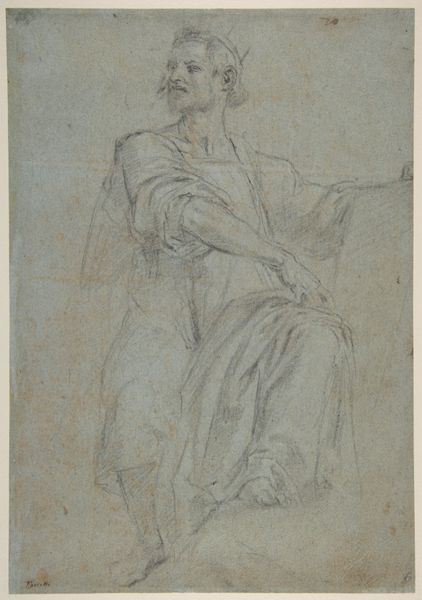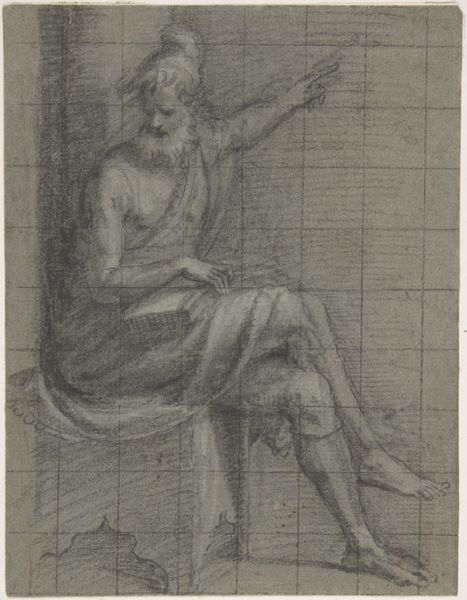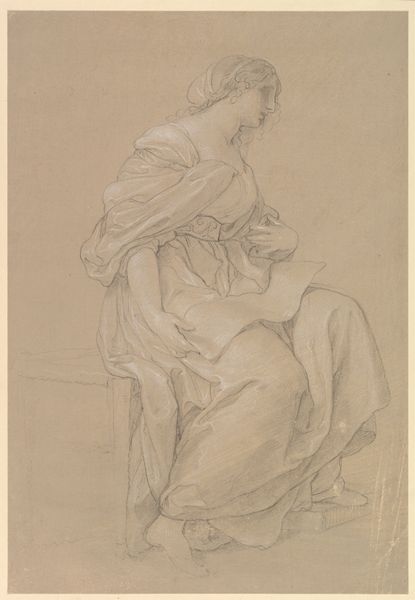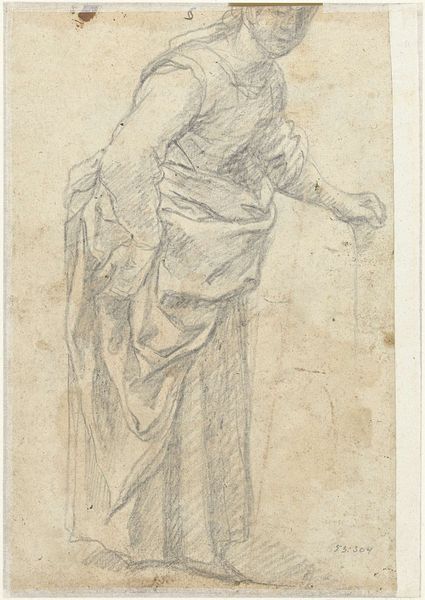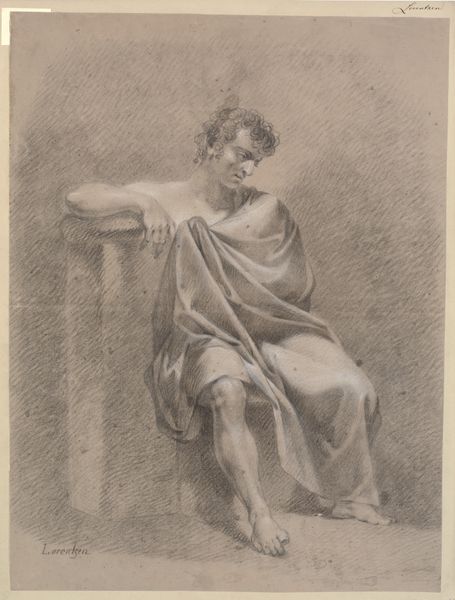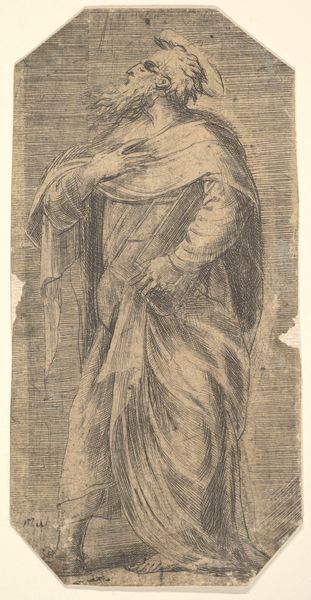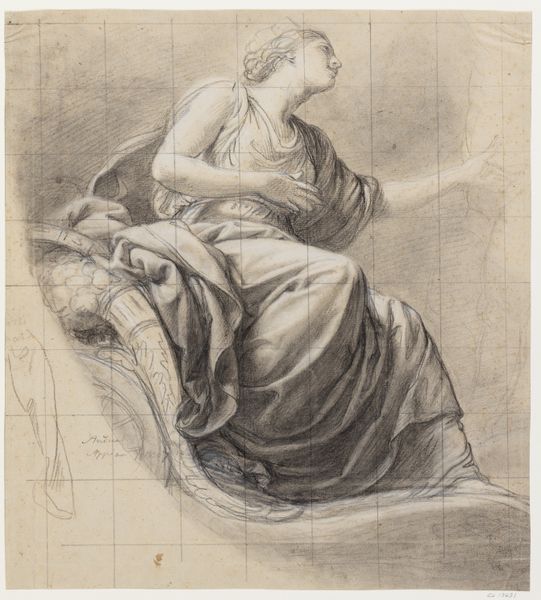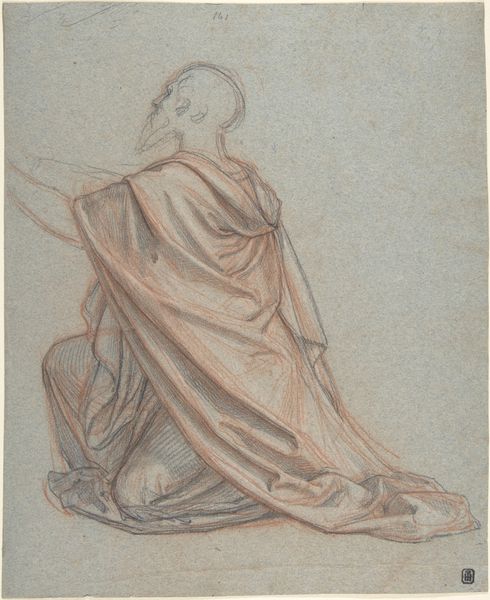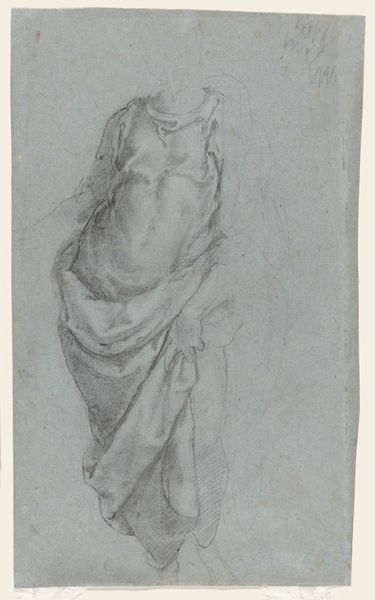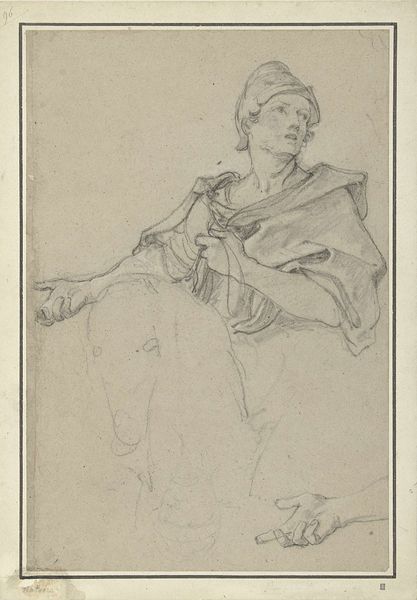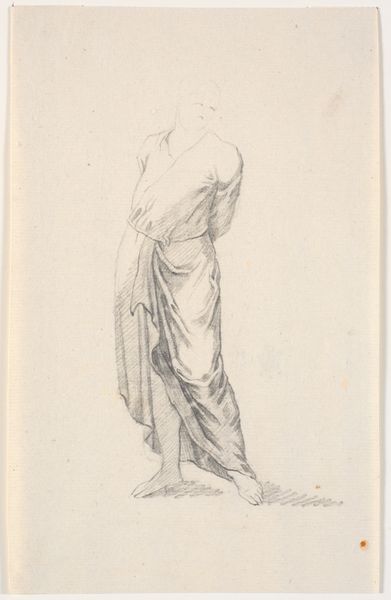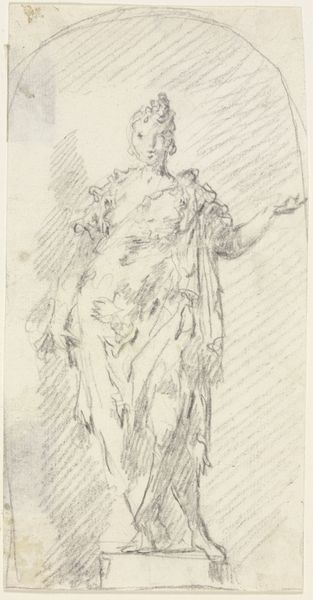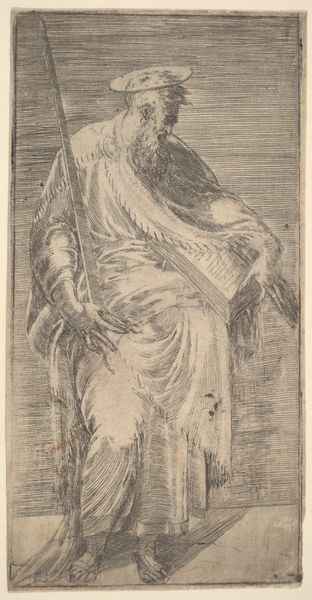
drawing, print, pencil
#
portrait
#
pencil drawn
#
drawing
# print
#
pencil sketch
#
pencil drawing
#
pencil
#
pre-raphaelites
Dimensions: sheet: 12 5/8 x 8 3/4 in. (32 x 22.2 cm), irreg.
Copyright: Public Domain
Editor: Here we have Edward Burne-Jones’s "Seated Woman," rendered in pencil around 1864. It's a captivating print, evoking a sense of quiet contemplation. What strikes me most is the artist's reliance on line and shading to create texture. What stands out to you about it? Curator: What interests me is how the "humble" pencil, a tool readily available, challenges our perceptions of value. We see Burne-Jones, associated with the Pre-Raphaelites, a movement supposedly about historical and mythological grandeur, employing this accessible medium. Think about the societal value assigned to "high art" versus, say, preparatory sketches. Was this piece meant for public consumption, or was it more private, an exploration of form and line? Editor: That's interesting, I hadn't considered the implications of using pencil. So, the choice of material might tell us something about the intended audience or even the purpose of the work itself? Curator: Precisely. Also, consider the Pre-Raphaelite Brotherhood’s rebellion against the industrialization and mass production of art. This drawing becomes an interesting point. The availability of the material reflects broader access and changes in production of materials – something the Pre-Raphaelites would likely have considered critically. The seemingly simple pencil carries a weight of social and industrial meaning. Editor: So, it’s not just a pretty picture but a commentary on the very systems of art production and consumption in the 19th century. Curator: Absolutely. The act of creation is always tied to available resources. A print allows reproduction for greater accessibility. A pencil allows corrections to sketches by an increasingly broader array of users. These practical factors matter! What are your thoughts on how an awareness of these changes our interaction with the artwork? Editor: I now view the “simplicity” of the pencil work in terms of how new markets influenced artists’ creation of a more affordable product. I’ll have to keep that in mind. Thanks!
Comments
No comments
Be the first to comment and join the conversation on the ultimate creative platform.
